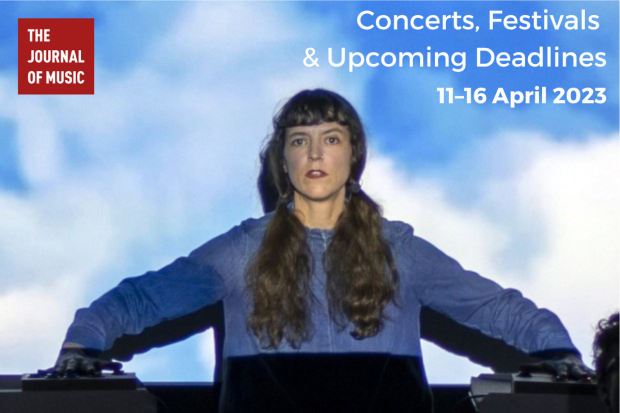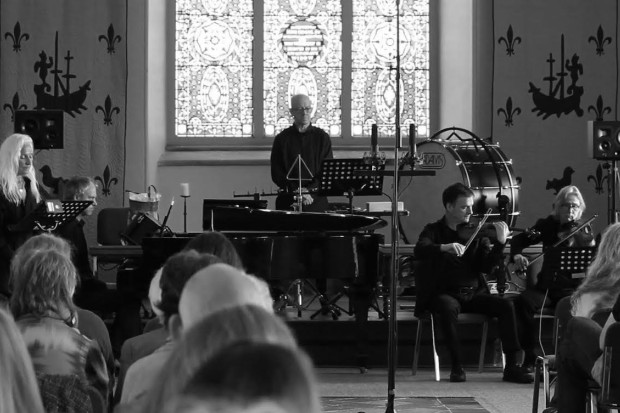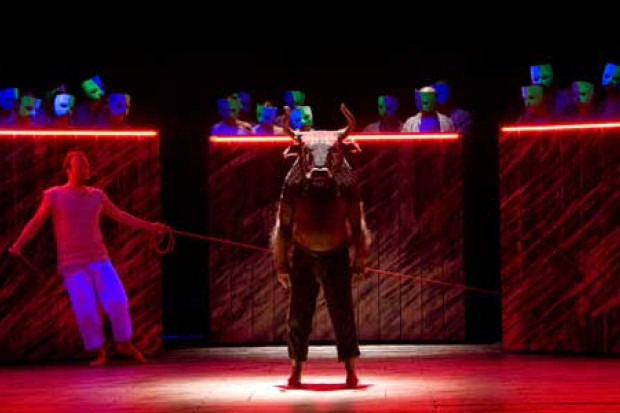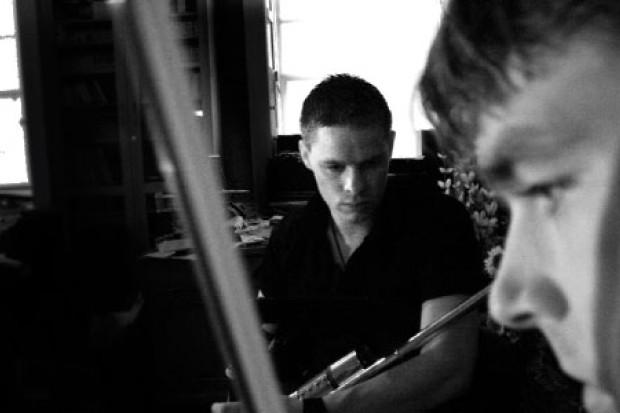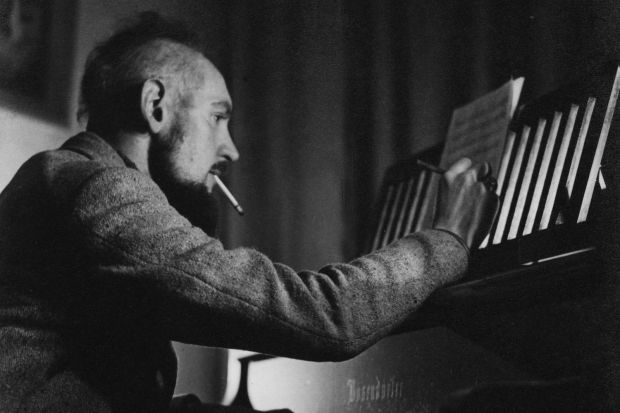
Enea Sorini and Peppe Frana
A Modern Tour of Ancient Music
As the possibility of a return to live performance seems to shimmer on the horizon, there’s been time to reflect on the experience of watching concerts and festivals online; on how the experience – though instinctively we feel as though it should resemble listening to a recording – resembles listening live, sometimes effectively, others in an uncanny valley sort of way, and on how the tone of these festivals has varied from event to event. Festivals have succeeded by replicating, as closely as possible, the experience of live performance; others by bringing video work to the fore. Some have seemed to expand in scope, drawing in performances from around the world, while others have striven to recreate the in-person experience as much as possible.
In the case of the Galway Early Music Festival, which held its 25th festival on 21–23 May, I was struck by the local, informal nature of the event. Each concert was preceded by a brief introduction, its tone that of a guided tour. The concerts, released over YouTube, kept an active live chat, with the musicians actively engaging with the audience (the concerts were not performed live), and each concert was preceded by a tour-guide-like introduction on the history of the works and of Galway.
It doesn’t take much for a classical concert to qualify as ‘cinematically adventurous’, but there was a nice sensation in seeing the camera track up a staircase strewn with rose petals, seeming to catch the musicians playing privately for each other. This was the opening of ‘La Fresca Rosa’, the lunchtime concert that launched this year’s festival. Performed by soprano Aisling Kenny with accompaniment by Eamon Sweeney on lute and theorbo guitar (a baroque guitar with extra bass strings running adjacent to the neck), and Yonit Kosovske on harpsichord, explored Italian song from the 17th century.
This concert’s centrepiece, Barbara Strozzi’s heartbreaking Lagrime Mie, was the highlight of the concert and close to the highlight of the whole festival. Strozzi’s music is exceptional to begin with: the opening a tearful, sustained high note, delicate ornamentation causing it to tremble and sob – a knot in the stomach; later, chromatic notes twist the knot. But the performance was just as good, with some superb choices in terms of timbre and ornamentation; Kenny’s voice by turns delicate, passionate and declamatory, and the harpsichord occasionally stepping aside for theorbo guitar accompaniment, drawing the music to a more personal, intimate place.
The rest of the programme provided some more great moments, not least the two solo instrumental works: Girolamo Frescobaldi’s Partite sopra l’aria di Monica, a set of harpsichord variations on a popular song of the time, and Giovanni Battista Granata’s Capriccio sopra la Chiaccona for theorbo guitar. The latter was an excellent programming choice as well, its bright colouring and stable ground bass providing balm after the grief of the Strozzi.
The next concert, performed by the newly formed Irish Consort under director and harpist Siobhán Armstrong, took a wider scope temporally – from the 16th to the 18th centuries – while focusing on music written in Ireland by John Dowland, William Byrd and others, as well as traditional melodies.
The traditional performers – whistle-player Ronan Browne and sean-nós singer Róisín Elsafty – each had solo performances, and each displayed a dazzling array of technique and skill. But there’s nothing quite like the early Irish harp, its sound full, sharp and metallic. The blend between the Irish harp and the viols – Armstrong in the live chat quoted Francis Bacon’s admiration for the pairing – was the biggest revelation of the festival. The distinct timbres of the pair melted together in a way both rich and surprising.
It was good as well to hear Armstrong mention, in the after-concert meeting, the colonial aspects of the music she was performing; that there are ‘so many ambivalences’ in Irish people playing music written by and for people ‘obliterating’ Irish culture and the Irish people. The politics of historical music is so rarely acknowledged, let alone discussed, that it was good to see some awareness of the facts of the history of these works.
This wasn’t the only concert to rub up uncomfortably against political reality. The following night’s concert was ‘Passage Beyond the Seas’, with the Italian performers Enea Sorini singing and playing a variety of percussion instruments, and Peppe Frana accompanying on oud and citole. The two, playing from the Chiesa di Santa Maria del Suffraggio in Fano, created an incredibly full sound between them, seeming at many times lost in the exultation of the music. In breaks between performances, birdsong filled the silence.
This concert was, for me, the most arresting and exciting musically of the whole festival. But dedicating a programme to music written for the Crusades creates a tricky balancing act. In a week of renewed bombing of Palestine, the words and theme of the first song, ‘Palastinalied’ – a 13th-century troubadour song vaunting the Christian claim to the Holy Land – left a particularly sour taste. The programme, to some extent, acknowledges these problems, stating that ‘no war ever was, nor ever will be, holy.’
The soprano Helen Hancock offered in the lunchtime concert ‘Love, Sorrow and Seduction’ a selection of Handel and Rameau, pairing solo songs of love and loss with a couple of solo instrumental works. And the closing concert, ‘Bach and Before’, featuring the chamber choir Resurgam directed by Mark Duley on organ and supported by Siobhán Armstrong on baroque harp, offered some lovely material. In particular, Monteverdi’s Venite, venite sitientes, a duet for sopranos with Armstrong providing a minimal accompaniment. Bach’s Jesu meine Freude showed Resurgam at their best.
There was a casually professional air over the whole festival, from the tour-guide-like introductions to each concert to the post-concert Zoom meetings attempting – not entirely successfully – to substitute for after-concert get-togethers. (Zoom is a poor tool for this sort of thing; there is no way to detach and form a smaller group, or to have a private chat; rather every person who wishes to make a comment is, to some extent, speaking publicly.) Having the musicians able to comment live and interact with the audience as both watched their performance together was also a nice touch – a curious blend of ancient music and modern technology.
Visit http://galwayearlymusic.com.
Published on 3 June 2021
Brendan Finan is a teacher and writer. Visit www.brendanfinan.net.












